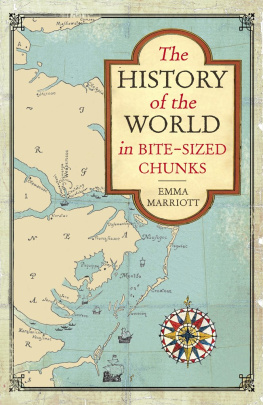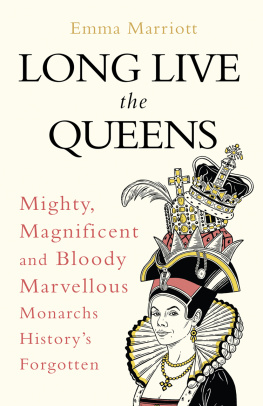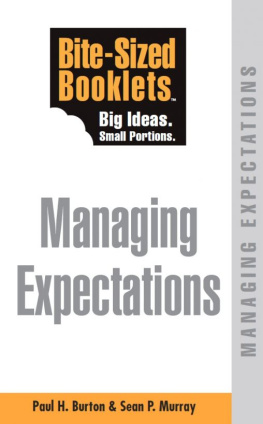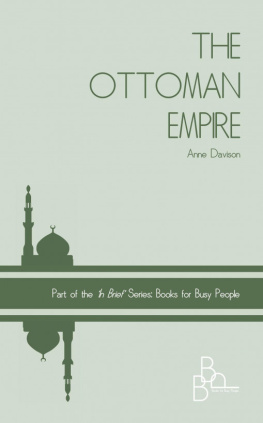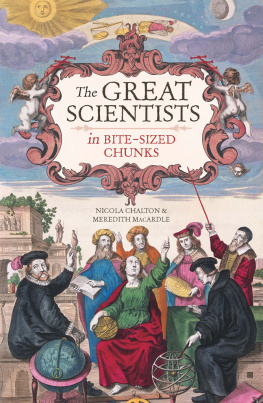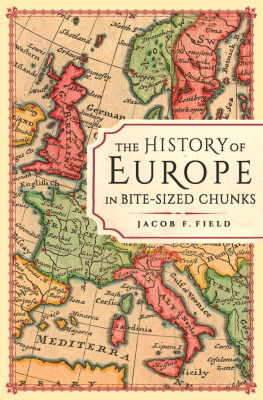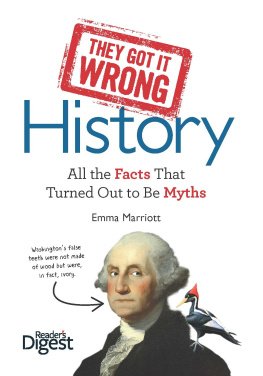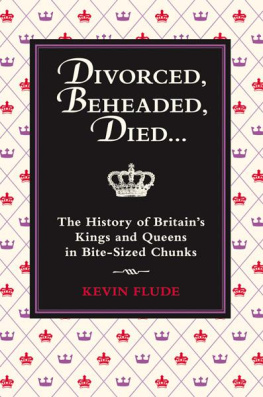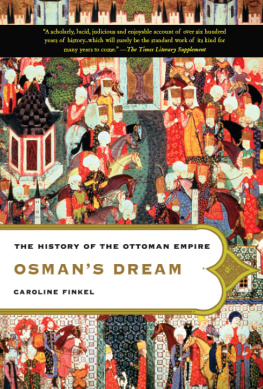
By the same author:
I Used to Know That: History
Bad History: How We Got the Past Wrong
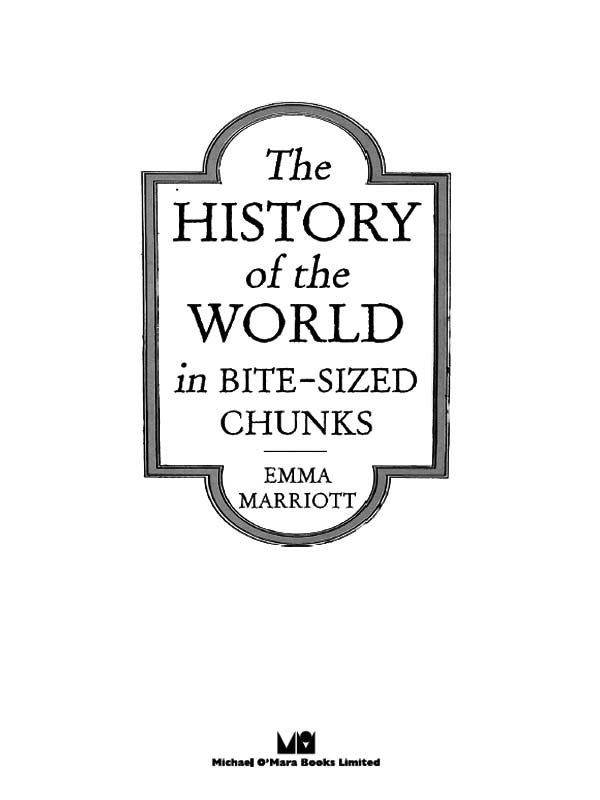
First published in Great Britain in 2012 by
Michael OMara Books Limited
9 Lion Yard
Tremadoc Road
London SW4 7NQ
Copyright Michael OMara Books Limited 2012
All rights reserved. You may not copy, store, distribute, transmit, reproduce or otherwise make available this publication (or any part of it) in any form, or by any means (electronic, digital, optical, mechanical, photocopying, recording or otherwise), without the prior written permission of the publisher. Any person who does any unauthorized act in relation to this publication may be liable to criminal prosecution and civil claims for damages.
A CIP catalogue record for this book is available from the British Library.
ISBN: 978-1-84317-886-6 in hardback print format
ISBN: 978-1-84317-929-0 in EPub format
ISBN: 978-1-84317-930-6 in Mobipocket format
Designed and typeset by www.glensaville.com
www.mombooks.com
For my father, Charles Donald Mann (19312012)
LIST OF MAPS
INTRODUCTION
Our aim with this book was to encapsulate nearly 5,000 years of world history in one, relatively slim volume. The vast and often complex nature of our global history was to be distilled down into a format both simple and accessible, into a collection of bite-sized chunks.
Added to this, we resolved to give due prominence to the worlds earliest civilizations and ancient empires, and to provide a history of the world that would also venture beyond the well-trodden paths of European history.
The familiar stories of European and North American history are of course here, from the glories of the Ancient Greeks and the Norman invasions to the American Wars of Independence and the Wall Street Crash. But we also delve into the events and peoples of the Far East, Africa, the Middle East, Oceania and the Americas, to highlight, albeit briefly (as is the nature of the book), such gems as the Indus civilization in Pakistan, the Tang dynasty in China, the Kush kingdom in North Africa, and Nadir Shah in Persia.
Each entry is concise but comprehensive, a self-contained morsel of information that can be consumed on its own or digested alongside its fellow entries. Weve tried to cover as much as we can within one volume (although its often more difficult to decide what should be left out than what should stay in). Cross-references are also given in the text to other entries and events, as history is nothing if not interlinked and shaped by what has gone before.
We begin with the worlds earliest civilizations, of which we know relatively little, but which nonetheless have great influence on life today. (In the words of the historian J. M. Roberts: Distant history still clutters up our lives, and our thinking.) Thereafter more than fifty-four centuries of world history are covered right up to 1945, with the entries split into subgroups encompassing the Middle East and Africa, Europe, the Americas, the Far East and Oceania. Often, modern names of countries and cities have been given, although older names have been retained when deemed more appropriate and familiar to the reader.
Our hope is that The History of the World in Bite-Sized Chunks will have pruned away some of the confusing mesh of history in order to get to some of its key facts, from mass migration and conflict to the dazzling achievements of the past and the numerous examples of mans tenacity to survive, all of which still influences our thinking and makes us what we are today.
EMMA MARRIOTT
Grateful thanks to Dr Hilary Stroh (ne Larkin), Lindsay Davies, David Woodroffe, Ana Bjeanevi, Greg Stevenson, Andrew John, Charlotte Buchan, Dominique Enright and Glen Saville.
CHAPTER ONE:
FIRST EMPIRES AND CIVILIZATIONS
3500 BC to 800 BC
MIDDLE EAST AND AFRICA
S UMERIA
In about 5000 BC , farmers settled on the fertile land of southern Mesopotamia (now Iraq) known as Sumer, and from these humble beginnings the worlds first great civilization formed. Living along the river valleys of the Tigris and Euphrates (Mesopotamia is Greek for the land between two rivers), Sumerian farmers were able to grow an abundance of grain and other crops, the surplus of which enabled them to settle in one place. Sumerians also traded this surplus food for metals and tools with people as far away as present-day Pakistan and Afghanistan, and they dug a network of ditches and canals as drainage channels on their fertile but flood-prone lands.
By 3000 BC , a number of city-states had developed in Sumer, the largest being Ur, with a population of 40,000. The first known system of writing originated in Sumer: at first pictographic, it gradually evolved into a series of simplified wedge-shaped signs formed using reed stalks on clay tablets (the script came to be called cuneiform, meaning wedge-shaped in Latin). Sumerians also devised complex administrative and legal systems, developed wheeled vehicles and potters wheels, and built great ziggurats and buildings with columns and domes.
The first great empire of Sumer was established by Sargon, king of Akkad (an ancient kingdom situated north of Sumer), in about 2350 BC . All Sumerian cities were united under his control and the empire stretched from Syria to the Persian Gulf. This dynasty was destroyed in about 2200 BC but after 2150 BC the kings of Ur re-established Sumerian authority in Sumer and also conquered Akkad. Following an invasion by the Elamites (a civilization to the east of Sumer) and the sack of Ur in around 2000 BC , Sumer came under Amorite rule, out of which emerged the great city-state of Babylon (see ).
A NCIENT E GYPT: THE O LD K INGDOM
The first great civilization in Africa began with the settlement of the Nile valley in the north-east of the continent in around 5000 BC . Its now thought these early settlers were from the Sahara, where, some 2,000 years earlier, Africas first farming societies had developed before climate change had turned the Sahara into desert. This same climate change had dried out the swamps of the Nile valley, making it more of an attractive settlement for farming people.
By the mid-fourth millennium BC , the valley of the Nile was densely populated, towns had grown and the region had been divided into two Egyptian kingdoms. Traditional Egyptian chronology tells us that in 3200 BC , the pharaoh (ruler) Menes unified the two kingdoms of Egypt to create a single state. This saw the beginning of a 3,000-year civilization that was marked by monumental tomb-building projects and a flourishing of Egyptian culture.
The earliest period of Ancient Egypt, known as the Old Kingdom (c. 25752130 BC ), was ruled by a number of powerful pharaohs and saw major developments in technology, art and architecture. During this era, hieroglyphic script was developed and the Great Sphinx and Giza pyramids were constructed (during which thousands of ordinary Egyptians died). The pyramids provided for the after-life of the pharaoh, and were closely associated with the cult of the sun-god Ra their flared shape resembled the rays of the sun and provided for the deceased king a stairway to the gods.
A NCIENT E GYPT: THE M IDDLE AND N EW K INGDOMS
A period of stability in Egypt, known as the Middle Kingdom (c. 19381630 BC ), followed a century of severe drought, famine and the collapse of central government.
Next page
